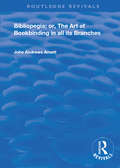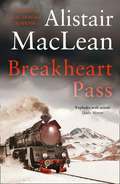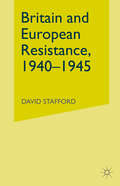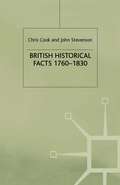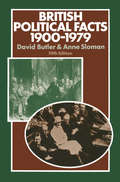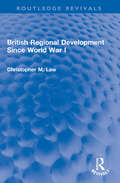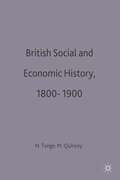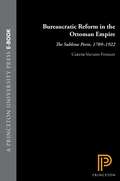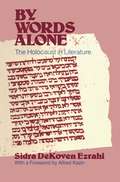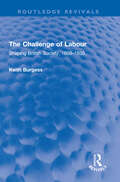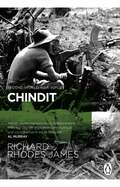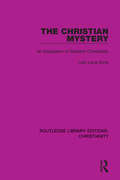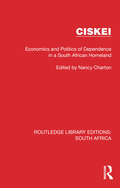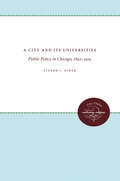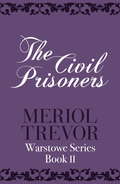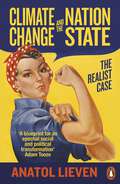- Table View
- List View
Bibliopegia: Or, The Art of Bookbinding in all its Branches (Routledge Revivals)
by John Andrews ArnettOriginally published in 1938, Arnett's Bibliopegia was one of the first manuals of bookbinding to be published in Britain, and is both more significant than the Cowie manual before it, and illustrated. Bibliopegia appeared at a time of immense changes in the structure of the trade which were brought about by the introduction of new techniques and equipment, and this in turn was precipitated by the rapid evolution of industry and society in general. This book provides an interesting insight into early nineteenth-century English binding practices.
Bibliopegia: Or, The Art of Bookbinding in all its Branches (Routledge Revivals)
by John Andrews ArnettOriginally published in 1938, Arnett's Bibliopegia was one of the first manuals of bookbinding to be published in Britain, and is both more significant than the Cowie manual before it, and illustrated. Bibliopegia appeared at a time of immense changes in the structure of the trade which were brought about by the introduction of new techniques and equipment, and this in turn was precipitated by the rapid evolution of industry and society in general. This book provides an interesting insight into early nineteenth-century English binding practices.
Breakheart Pass
by Alistair MacLeanA magnificent tale of heart-stopping suspense from the highly acclaimed master of the genre.
British Historical Facts, 1760-1830 (Palgrave Historical and Political Facts)
by C. Cook J. StevensonBritish Regional Development Since World War I (Routledge Revivals)
by Christopher M. LawFirst published in 1981, British Regional Development Since World War I presents a comprehensive and balanced introduction to the problems of regional development in Britain. Since World War I it has been possible to talk of Britain as two nations, a prosperous South including the Midlands, and a poor North. Christopher Law examines the nature and causes of this division, including impact of industrial structure, London’s role as capital in the spatial economy, and the influence of better environments on development. This valuable study will be an essential read for anyone interested in any aspect of regional development and development studies in the last ninety years.
British Regional Development Since World War I (Routledge Revivals)
by Christopher M. LawFirst published in 1981, British Regional Development Since World War I presents a comprehensive and balanced introduction to the problems of regional development in Britain. Since World War I it has been possible to talk of Britain as two nations, a prosperous South including the Midlands, and a poor North. Christopher Law examines the nature and causes of this division, including impact of industrial structure, London’s role as capital in the spatial economy, and the influence of better environments on development. This valuable study will be an essential read for anyone interested in any aspect of regional development and development studies in the last ninety years.
British Social and Economic History 1800–1900 (Documents and Debates)
by Neil Tonge Michael QuinceyAcknowledgements General Editor's Preface Introduction The Standard of living Debate Were the Working Classes Revolutionary? Trade Unions Laissez-Faire and State Intervention: The Economy Laissez-Faire and State Intervention: Social Management Education Agriculture 1760-1900 Railways A New Age? Depression and Decline? The British Economy 1870-1900 The New Jerusalem? The Impact of Industrialisation.
Bureaucratic Reform in the Ottoman Empire: The Sublime Porte, 1789-1922 (PDF)
by Carter Vaughn FindleyFrom the author's preface: Sublime Porte--there must be few terms more redolent, even today, of the fascination that the Islamic Middle East has long exercised over Western imaginations. Yet there must also be few Western minds that now know what this term refers to, or why it has any claim to attention. One present-day Middle East expert admits to having long interpreted the expression as a reference to Istambul's splendid natural harbor. This individual is probably not unique and could perhaps claim to be relatively well informed. When the Sublime Porte still existed, Westerners who spent time in Istanbul knew the term as a designation for the Ottoman government, but few knew why the name was used, or what aspect of the Ottoman government it properly designated. What was the real Sublime Porte? Was it an organization? A building? No more, literally, than a door or gateway? What about it was important enough to cause the name to be remembered?In one sense, the purpose of this book is to answer these questions. Of course, it will also do much more and will, in the process, move quickly onto a plane quite different from the exoticism just invoked. For to study the bureaucratic complex properly known as the Sublime Porte, and to analyze its evolution and that of the body of men who staffed it, is to explore a problem of tremendous significance for the development of the administrative institutions of the Ottoman Empire, the Islamic lands in general, and in some senses the entire non-Westerrn world.
Bureaucratic Reform in the Ottoman Empire: The Sublime Porte, 1789-1922 (Princeton Studies on the Near East)
by Carter Vaughn FindleyFrom the author's preface: Sublime Porte--there must be few terms more redolent, even today, of the fascination that the Islamic Middle East has long exercised over Western imaginations. Yet there must also be few Western minds that now know what this term refers to, or why it has any claim to attention. One present-day Middle East expert admits to having long interpreted the expression as a reference to Istambul's splendid natural harbor. This individual is probably not unique and could perhaps claim to be relatively well informed. When the Sublime Porte still existed, Westerners who spent time in Istanbul knew the term as a designation for the Ottoman government, but few knew why the name was used, or what aspect of the Ottoman government it properly designated. What was the real Sublime Porte? Was it an organization? A building? No more, literally, than a door or gateway? What about it was important enough to cause the name to be remembered?In one sense, the purpose of this book is to answer these questions. Of course, it will also do much more and will, in the process, move quickly onto a plane quite different from the exoticism just invoked. For to study the bureaucratic complex properly known as the Sublime Porte, and to analyze its evolution and that of the body of men who staffed it, is to explore a problem of tremendous significance for the development of the administrative institutions of the Ottoman Empire, the Islamic lands in general, and in some senses the entire non-Westerrn world.
By Words Alone: The Holocaust in Literature
by Sidra DeKoven EzrahiThe creative literature that evolved from the Holocaust constitutes an unprecedented encounter between art and life. Those who wrote about the Holocaust were forced to extend the limits of their imaginations to encompass unspeakably violent extremes of human behavior. The result, as Ezrahi shows in By Words Alone, is a body of literature that transcends national and cultural boundaries and shares a spectrum of attitudes toward the concentration camps and the world beyond, toward the past and the future.
The Challenge of Labour: Shaping British Society, 1850–1930 (Routledge Revivals)
by Keith BurgessThe Challenge of Labour (1980) explains the changing forms of labour’s relationship with British society during the period of 1850 to 1930 – as the economic and social relations of Britain, the pioneer of modern industrial development, were undergoing a profound transformation due to increasing pressure from foreign competitors. It looks at the importance of the forces of production in determining the character of the relationship, whilst regarding labour as a creative act, identifying man as a social animal. This important period gave rise to a unique symbiosis in terms of a mutually dependent but simultaneously antagonistic relationship, reflected in the growth of trade unionism, associations for working class ‘self-help’, and labourist political movements during the years 1850–70. The book goes on to explain why and how these forms of labour’s relationship with British society as a whole were subsequently to be transformed as they were affected by the changing direction of Britain’s economic development after the 1870s. This resulted in a recognisable ‘modern’ pattern of British social relations, marked by a growing acceptance of ‘corporatist’ solutions to problems of economic and social instability.
The Challenge of Labour: Shaping British Society, 1850–1930 (Routledge Revivals)
by Keith BurgessThe Challenge of Labour (1980) explains the changing forms of labour’s relationship with British society during the period of 1850 to 1930 – as the economic and social relations of Britain, the pioneer of modern industrial development, were undergoing a profound transformation due to increasing pressure from foreign competitors. It looks at the importance of the forces of production in determining the character of the relationship, whilst regarding labour as a creative act, identifying man as a social animal. This important period gave rise to a unique symbiosis in terms of a mutually dependent but simultaneously antagonistic relationship, reflected in the growth of trade unionism, associations for working class ‘self-help’, and labourist political movements during the years 1850–70. The book goes on to explain why and how these forms of labour’s relationship with British society as a whole were subsequently to be transformed as they were affected by the changing direction of Britain’s economic development after the 1870s. This resulted in a recognisable ‘modern’ pattern of British social relations, marked by a growing acceptance of ‘corporatist’ solutions to problems of economic and social instability.
Chindit
by Richard Rhodes JamesPart of the SECOND WORLD WAR VOICES series in partnership with the podcast We Have Ways of Making You Talk, presented by comedian Al Murray and bestselling historian James Holland.With a new introduction by Al Murray'Heroic, punishing excursions behind enemy lines, the Chindit expeditions are mythical and controversial in equal measure...Rhodes James takes us right to the heart of them' Al Murray__________________________________1943 - The fight to retake Burma is about to begin. Major-General Orde Wingate surprises the conquering Japanese Army with a daring raid they had no idea was coming. But this is just the beginning.Next, he devises a campaign of guerrilla operation to hit the invaders where it most hurts. Behind their own lines. Marshalling and training a lethal force of 10,000 men deep in the Burmese jungle, the Chindits are born.Cipher Officer Richard Rhodes James was part of that hidden army and chronicles the story of a band of brothers fighting for survival against a remorseless enemy and an unforgiving environment. Neither took any prisoners. The Chindits' daring actions and tactical brilliance laid the foundations for turning the tide of the war in the East.
The Christian Mystery: An Exposition of Esoteric Christianity
by Lois Lang-SimsFirst published in 1980, The Christian Mystery presents a new approach to considering the Mysteries of the Faith. The book examines the doctrines of Christianity, analysing them closely and showing how together they constitute an invisible whole. It argues that churches should turn back to the esoteric teachings known by the first Christians and explores how Christianity has developed the primal Tradition of which Jesus was Representative. The Christian Mystery will appeal to those with an interest in theology, the philosophy of religion, and the history of Christianity.
The Christian Mystery: An Exposition of Esoteric Christianity
by Lois Lang-SimsFirst published in 1980, The Christian Mystery presents a new approach to considering the Mysteries of the Faith. The book examines the doctrines of Christianity, analysing them closely and showing how together they constitute an invisible whole. It argues that churches should turn back to the esoteric teachings known by the first Christians and explores how Christianity has developed the primal Tradition of which Jesus was Representative. The Christian Mystery will appeal to those with an interest in theology, the philosophy of religion, and the history of Christianity.
Ciskei: Economics and Politics of Dependence in a South African Homeland (Routledge Library Editions: South Africa #3)
by Nancy ChartonOriginally published in 1980, this book examines the ‘self-government’ constitution, administrative and party system of The Ciskei which was one of the black ‘homelands’ created by the government of the Republic of South Africa in its pursuit of ‘separate development’. (It has since been reintegrated into South Africa, becoming part of the Eastern Cape Province). The book discusses how, because poverty was endemic and agricultural resources poorly developed the region was dependent on the encapsulating white area for jobs, capital, entrepreneurial skills and markets. It examines how the existence of job opportunities in contiguous white areas has stimulated the growth of black towns, it has also inhibited their development. The book considers the role of the mass media played, illustrating how both traditional oral forms and contemporary mass media depended ultimately on white input and were thus oriented towards white rather than black politics.
Ciskei: Economics and Politics of Dependence in a South African Homeland (Routledge Library Editions: South Africa #3)
by Nancy ChartonOriginally published in 1980, this book examines the ‘self-government’ constitution, administrative and party system of The Ciskei which was one of the black ‘homelands’ created by the government of the Republic of South Africa in its pursuit of ‘separate development’. (It has since been reintegrated into South Africa, becoming part of the Eastern Cape Province). The book discusses how, because poverty was endemic and agricultural resources poorly developed the region was dependent on the encapsulating white area for jobs, capital, entrepreneurial skills and markets. It examines how the existence of job opportunities in contiguous white areas has stimulated the growth of black towns, it has also inhibited their development. The book considers the role of the mass media played, illustrating how both traditional oral forms and contemporary mass media depended ultimately on white input and were thus oriented towards white rather than black politics.
A City and Its Universities: Public Policy in Chicago, 1892-1919
by Steven J. DinerBy focusing on Chicago's first generation of activist professors, Diner shows how modern public policy evolved. Chicago's early academic professionals, believing that they alone could solve the problems of a complex urban society, united to press for reforms in education, criminal justice, social welfare, and municipal administration. By claiming professional autonomy, they established the university firmly in American society and were able to affect it profoundly.Originally published in 1980.A UNC Press Enduring Edition -- UNC Press Enduring Editions use the latest in digital technology to make available again books from our distinguished backlist that were previously out of print. These editions are published unaltered from the original, and are presented in affordable paperback formats, bringing readers both historical and cultural value.
The City in South Asia: Pre-Modern and Modern (Routledge Revivals)
by Kenneth Ballhatchet John HarrisonFirst published in 1980, The City in South Asia is a collection of papers which were presented at an inter-disciplinary seminar on The City in South Asia: pre-modern and modern, held at the School of Oriental and African Studies, under the auspices of the Centre of South Asian Studies. Some of the papers in this volume are comparative; others are concerned with specific cities – Allahabad, Dacca, Delhi, Karachi, Lucknow and Murshidabad. They deal with three main themes: the city and the state, the city and society, the city and the surrounding country. The book is appropriately embellished with maps and contemporary illustrations, and will be of interest to students of history, ethnic studies, and South Asian studies.
The City in South Asia: Pre-Modern and Modern (Routledge Revivals)
by Kenneth Ballhatchet John HarrisonFirst published in 1980, The City in South Asia is a collection of papers which were presented at an inter-disciplinary seminar on The City in South Asia: pre-modern and modern, held at the School of Oriental and African Studies, under the auspices of the Centre of South Asian Studies. Some of the papers in this volume are comparative; others are concerned with specific cities – Allahabad, Dacca, Delhi, Karachi, Lucknow and Murshidabad. They deal with three main themes: the city and the state, the city and society, the city and the surrounding country. The book is appropriately embellished with maps and contemporary illustrations, and will be of interest to students of history, ethnic studies, and South Asian studies.
The Civil Prisoners: Warstowe Saga Book Two (Ulverscroft Large Print Ser.)
by Meriol TrevorFollowing the breakdown of the Peace of Amiens in 1802, Napoleon retaliated against England's renewal of hostilities by holding as prisoners all British civilians in France at the time. So it is in a foreign city and amidst the uneasy atmosphere of a country at war that a group of English families are unexpectedly brought together again and forced to make the best of their precarious situation. At the centre of the unfolding drama is the growing love between Cary Vyner and Emily, Lady Royden - a love with its innocence and temptations as well as its doubts and reassurances. As their relationship develops, so too do the schemes and aspirations of Cary's Warstowe relatives who are intent on securing the Vyner inheritance for their own son. Set against the backdrop of war-torn Europe, this is an elegant Regency romance in the tradition of Georgette Heyer.
Climate Change and the Nation State: The Realist Case
by Anatol Lieven'This is one of those rare books that have something really important to say. Anatol Lieven, one of the most original and independent-minded foreign policy thinkers, is telling his fellow realists that at this moment the world's great powers are far more threatened by climate change than they are by each other.' - Ivan Krastev, author of The Light That FailedIn the past two centuries we have experienced wave after wave of overwhelming change. Entire continents have been resettled; there are billions more of us; the jobs done by countless people would be unrecognizable to their predecessors; scientific change has transformed us all in confusing, terrible and miraculous ways.Anatol Lieven's major new book provides the frame that has long been needed to understand how we should react to climate change. This is a vast challenge, but we have often in the past had to deal with such challenges: the industrial revolution, major wars and mass migration have seen mobilizations of human energy on the greatest scale. Just as previous generations had to face the unwanted and unpalatable, so do we.In a series of incisive, compelling interventions, Lieven shows how in this emergency our crucial building block is the nation state. The drastic action required both to change our habits and protect ourselves can be carried out not through some vague globalism but through maintaining social cohesion and through our current governmental, fiscal and military structures.This is a book which will provoke innumerable discussions.
